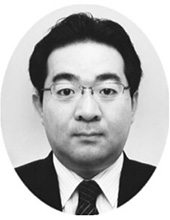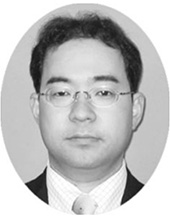Best Paper Award
32-Gbit/s CMOS Receivers in 300-GHz Band
Shinsuke HARA, Kosuke KATAYAMA, Kyoya TAKANO, Ruibing DONG, Issei WATANABE, Norihiko SEKINE, Akifumi KASAMATSU, Takeshi YOSHIDA, Shuhei AMAKAWA, Minoru FUJISHIMA
[IEICE TRANS. ELECTRON., VOL.E101-C, NO.7 JULY 2018]

Shinsuke HARA
Kosuke KATAYAMA
Kyoya TAKANO
Ruibing DONG
Issei WATANABE
Norihiko SEKINE
Akifumi KASAMATSU
Takeshi YOSHIDA
Shuhei AMAKAWA
Minoru FUJISHIMA
The terahertz (THz) band, which is for electromagnetic waves between radio and light at the frequency range of roughly 100 GHz to 3 THz, is still underutilized. Although the THz wave undergoes significant absorption by water vapor and oxygen molecules in the atmosphere, the 300-GHz band in a low THz frequency range has a wide gatmospheric windowh, which is the portion of the electromagnetic spectrum that can be transmitted with less distortion or absorption. Considering that the atmospheric attenuation characteristic is below 10 dB/km, it is expected that medium-range wireless transmission is possible. If a wide frequency range in this band is secured for wireless communications and its use begins, an ultra-high-speed wireless communication technology that accelerates the revolution of the industrial structure will be realized. Based on this expectation, the wireless physical layer using a frequency range of approximately 70 GHz was defined in IEEE Standard 802.15.3d in October 2017, and the discussion regarding its utilization is beginning in international standards organizations.
To widely spread ultra-high-speed wireless communication in the 300-GHz band, it would be desirable to also realize a transceiver using silicon CMOS technology because of its manufacturability of digital processing and memory circuits. However, the unity-power-gain frequency, fmax, is not adequate for carrier frequencies of 300 GHz, suggesting that a low-noise amplifier (LNA) cannot be designed. A receiver for the 300-GHz band built using current Si CMOS technology needs to adopt an LNA-less receiver architecture.
This paper presents a LNA-less 300-GHz CMOS receivers that operate above NMOS unity-power-gain frequency, f_max. The double-balanced fundamental-mixer is adapted at the first-stage of the receiver. Because of the LNA-less architecture, the conversion loss and noise figure of the mixer must be as lower as possible. The deterioration of the receiver performance is suppressed by combining with the mixer and a high-performance doubler- or tripler-last multiplier chain that upconverts an LO signal into 300 GHz. Short-range wireless communication of both receivers is successfully demonstrated at high data rates of 32 Gb/s with 16QAM. This shows the potential of CMOS technology to be used for ultrahigh-speed THz wireless communications. The development of THz CMOS technology is still at a rudimentary stage, but nevertheless these results are encouraging.




















